DCPA NEWS CENTER
Enjoy the best stories and perspectives from the theatre world today.
Enjoy the best stories and perspectives from the theatre world today.
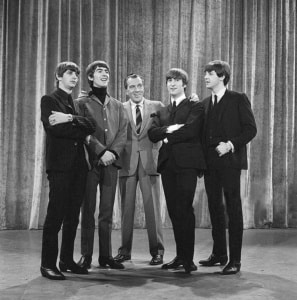
The Beatles with Ed Sullivan
From the 1940s to 1970, American television was comprised of three major networks — ABC, NBC and CBS. It was there that Americans turned for their news and entertainment. In every household across the country, families tuned into their one television set to watch programs together. Then, the next morning, people literally gathered around the water cooler to collectively examine current events.
Walter Cronkite, David Brinkley, Edward Murrow, Barbara Walters. These weren’t just names, they were trusted friends who reported objectively and told it to us straight.
The 1960s was a decade in which television became pivotal in politics with coverage of the civil rights movement, Vietnam, the space race, the first televised political debate and the assassination of President John F. Kennedy.
At the same time, as television audiences grew, so too did programming options with sitcoms and a plethora of variety shows, which, at its peak, boasted 18 different options on only three channels.
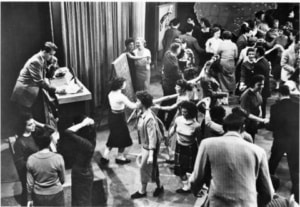
American Bandstand
While Tracy Turnblad’s big turn on the “Corny Collins Show” may be fictional, the setting for Hairspray was inspired by both the tumultuous events of the 1960s and the escapism that was offered by the era’s biggest variety shows.
The Ed Sullivan Show (CBS, 1948-1971)
For years, families tuned into “The Ed Sullivan Show” each Sunday evening for a lineup featuring all kinds of entertainment from opera to rock and roll, comedians to actors, and dancers to circus acts. Some of the most notable guests included the Beatles, the Supremes, the Jackson 5, Buddy Holly, Janis Joplin, the Rolling Stones, Dionne Warwick, Barbra Streisand and Elvis Presley who first appeared in 1956 a day after his first major-label release — “Heartbreak Hotel” — which catapulted the 21-year-old singer to the top of the charts and onto his throne as the King of Rock and Roll.
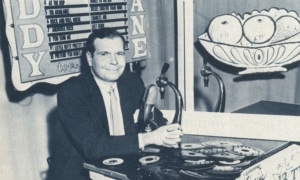
Buddy Deane
American Bandstand (ABC, 1952-1989)
From Philadelphia to LA. From weekday to once a week. From 90 minutes to 30 minutes. From all-white to integrated. “American Bandstand” withstood the whims of its network to sustain a 37-year run on television. Its host, Dick Clark, became an American icon. The show launched The Twist and Y-M-C-A dance moves. And a lineup of some of the best artists from every genre received their debuts as teens across the nation tuned in to watch: Paul Simon and Art Garfunkel, Ike and Tina Turner, Smokey Robinson and the Miracles, Aretha Franklin and Stevie Wonder.
The Buddy Deane Show (WJZ-TV in Baltimore, 1957-1964)
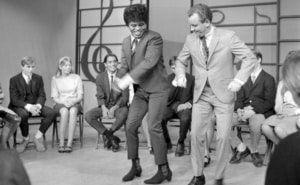
The Lloyd Thaxton Show
Considered to be the basis of Hairspray, “The Buddy Deane Show” was a daily, two-and-a-half-hour teen dance show in Baltimore. The concept was similar to the early days of “American Bandstand,” its biggest rival for on-air talent. “The Buddy Deane Show” featured a multi-racial lineup of performers, but when it came to integrating its teenage audience, the network was at odds with Deane. Initially, an all-black audience danced once every two weeks; however, the network felt that the civil rights movement necessitated full integration on a regular basis. After complying for several months and receiving backlash from viewers, Deane insisted on reverting to a racially segregated audience, putting him at odds with WJZ-TV. Ultimately, the dispute led to the end of the program in 1964.
The Lloyd Thaxton Show (National Syndication, 1961-1967)
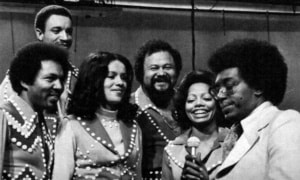
5th Dimension and Don Cornelius on Soul Train
Former used car salesman and disc jockey Lloyd Thaxton hosted “The Lloyd Thaxton Show” from 1961-1967. Modeled after “American Bandstand,” the hour-long program featured zany antics from the host, guest artists, and pre-teens and teens dancing to the latest hits of the day. What originally started as a Los Angeles TV broadcast, was syndicated in 1964, becoming the highest-rated musical entertainment program in the nation. It aired five days a week in the US and Canada.
Soul Train (National Syndication, 1971-2006)
In an era where entertainment was dominated by white executives, “Soul Train” was produced by black people for a black audiences. Conceived of by Don Cornelius, “Soul Train” began as a concert tour for Chicago high schools. But Cornelius had bigger aspirations and secured a sponsorship with Sears & Roebuck to develop the concept into a live, week-day show. It soon caught the eye of other investors and was ultimately nationally syndicated for 35 years. With more than 1,100 episodes, it was one of the longest-running first-run syndicated programs in the country.
